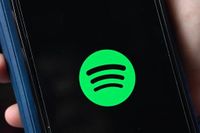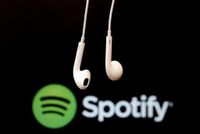On Wednesday, April 16, 2025, Spotify, the popular music streaming service, faced significant instability affecting users around the globe. Reports began to flood in early in the morning, with complaints surfacing as early as 8:00 AM, according to Downdetector, a platform that tracks service outages. By 10:08 AM, the site had recorded over 3,045 reports, primarily concerning issues with audio streaming, website access, and server connections.
Users across various regions, including the United States, Canada, Argentina, Spain, France, India, South Africa, and the United Kingdom, experienced difficulties with the app. Many reported that the application was stuck on loading screens, while others encountered the error message "Page not available" when trying to access the service's website. The web version of Spotify also displayed a "Server Error" message, leaving many users frustrated and unable to listen to their favorite music.
As the morning progressed, the situation escalated, with more than four thousand complaints logged in Brazil alone. The term "Spotify" trended on social media, particularly on X, the platform formerly known as Twitter, as users voiced their frustrations and sought answers regarding the service's unavailability. Google Trends reflected this surge in interest, showing spikes in searches for terms like "spotify fora do ar" (Spotify down) and "is spotify down" shortly after 10:00 AM.
While some users reported that the app functioned but at a significantly reduced speed, others found themselves unable to open the application at all. The issues seemed widespread, impacting both the desktop and mobile versions of Spotify. According to user reports, some desktop users encountered a black screen that failed to load, while others could select songs but could not play them. Mobile users on iOS had some success in playing cached songs, but new selections remained inaccessible.
In response to the growing frustration, Spotify acknowledged the issues on their official social media channels, stating, "We are aware of some problems right now and are looking into them!" However, the company did not provide a detailed explanation of the root cause of the outages. Speculation among users suggested that the problems could be linked to a broader platform instability, similar to previous incidents that had occurred in the past.
For instance, in 2021, Spotify experienced similar issues due to a Google Cloud outage that affected numerous services simultaneously. This historical context added to user anxiety as they awaited updates from Spotify’s technical team.
By 11:00 AM, the company issued a statement indicating that they were actively investigating the situation but did not confirm any security breaches, despite some user claims suggesting otherwise. "The service has not been hacked," Spotify clarified, attempting to quell rumors that may have contributed to user panic.
As the day wore on, users continued to express their concerns on social media, with many sharing their experiences of being unable to access playlists or being stuck in the login area. The frustration was palpable, especially for those who rely on the service for their daily music needs. The anticipation for a swift resolution was high, with users hoping for a return to normalcy as quickly as possible.
Spotify's technical team was under pressure to address the issues, and the company promised to provide updates through their @SpotifyStatus channel on X. As the clock ticked on, the number of complaints began to stabilize, leading many to wonder when the service would fully recover.
Finally, at 1:08 PM, Spotify announced that the problems had been resolved, much to the relief of its users. The company reported that they had addressed the issues that had plagued the platform throughout the morning. Despite the resolution, the incident served as a reminder of the vulnerabilities that can affect even the most popular digital services.
The outage also highlighted the growing dependence on streaming services in everyday life. Since the popularization of streaming in 2014, the number of musicians earning revenue through Spotify has tripled, with over 600 million users reported to be using the platform in 2024. This incident may have caused a temporary disruption, but it also underscored the importance of reliable service in an increasingly digital world.
As Spotify users returned to their playlists and resumed their listening habits, many remained vigilant for any further updates from the company. The hope is that the incident will prompt improvements in the platform's stability and communication protocols, ensuring that users can enjoy uninterrupted access to their favorite music in the future.





